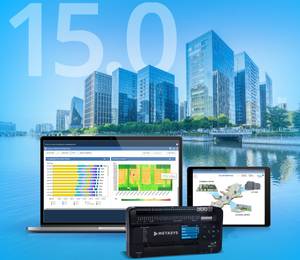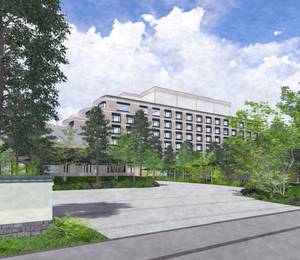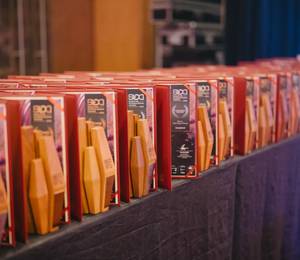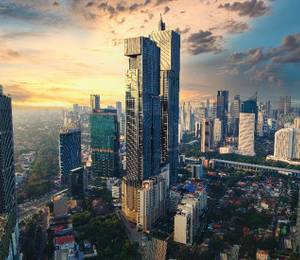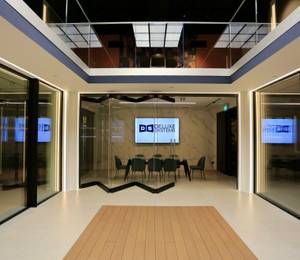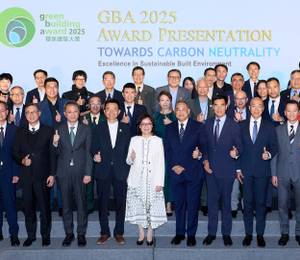Singapore – At the joint opening ceremony of the Singapore Green Building Week (SGBW) 2015, BEX Asia 2015, MCE Asia 2015 and IGBC 2015 held at the Marina Bay Sands on 2 September 2015, Guest-of-Honour Mr Choi Shing Kwok, Permanent Secretary, Ministry of the Environment and Water Resources, announced the new Green Mark 2015 and details of the BCA SkyLab, claimed to be the world’s first high-rise rotatable laboratory for the tropics. He also shared key findings from the second BCA Building Energy Benchmarking Report (BEBR) and latest green initiatives rolled out by the Building and Construction Authority (BCA).
Launch of the Green Mark 2015
In its commemorative 10th year for BCA Green Mark scheme this year, BCA introduced a new version of the Green Mark scheme called the “Green Mark 2015” to further push the boundaries on environmental sustainability. The Green Mark 2015 was developed through a collaborative framework involving more than 100 industry specialists and experts, and 12 taskforces led by BCA. The collaboration was complemented by extensive consultation with industry bodies and academia. This version, which was developed for new non-residential buildings, will incorporate key changes, with an expanded focus to address sustainability in a more balanced and holistic manner.
Green Mark 2015 has been structured into four main sections:
(i) Climatic Response,
(ii) Building Energy Performance
(iii) Resource Stewardship
(iv) Smart & Healthy Building.
A bonus section on advanced green building efforts is included, to spur efforts beyond requirements. Key benefits for building occupants and users include a stronger emphasis on indoor environmental quality in relation to enhanced health and well-being, and buildings that are equipped with smart controls and analytics to assist in the management and optimisation of building resources. The revamped scheme will enable projects to analyse its energy effectiveness in both the optimisation of energy efficiency as well as energy consumption. Greater recognition for renewable energy will be considered; this will accelerate solar PV adoption by further encouraging the use of renewable energy through solar feasibility studies and solar ready roof design. The scheme is launched for piloting and will be fine-tuned before full implementation.
Dr John Keung, Chief Executive Officer of BCA, commented: “Green Mark 2015 will play a more prominent role in driving and communicating sustainability outcomes in Singapore, as buildings consume more than 30 percent of the total electricity. It will recognise the leadership of building owners who drive improvements to the overall environmental credentials of projects. Such leadership by the building owner will add a layer of accountability and integrity to the projects teams in business sustainability reporting.”
The BCA SkyLab – A high-rise rotatable laboratory for the tropics
Guest-of-Honour Mr Choi Shing Kwok also unveiled the details of the BCA SkyLab, claimed to be the world’s first high-rise rotatable laboratory for the tropics with state-of-the-art facilities for testing and development of innovative energy-efficient building technologies.
Built on the rooftop of a new building at the BCA Academy, the BCA SkyLab is constructed on a rotatable platform to enable tests to be carried out at any orientation to the sun and wind. The BCA SkyLab is part of BCA’s plans to further accelerate the pace of research, development and application of energy-efficient building technologies.
Developed in collaboration with Lawrence Berkeley National Laboratory (LBNL) in California, the BCA SkyLab complements BCA’s existing Zero Energy Building (ZEB to develop green building research and development efforts in Singapore. BCA SkyLab is expected to be completed with a pipeline of technologies to start test-bedding by the first half of next year.
Release of the BCA Building Energy Benchmarking Report 2015
BCA also released the Building Energy Benchmarking Report (BEBR) 2015 for the second year. The report provides a comparative study which covers commercial buildings and consists of two years’ data.
The three key findings in the report are:
(i) Commercial buildings achieved better energy performance in 2014 compared to 2013, with retail buildings showing the most significant improvement.
(ii) BCA Green Mark certified commercial buildings continued to perform better than non-certified buildings.
(iii) Tenants’ electricity consumption continued to be comparable to that of their building owners, reaffirming the potential for tenants to play more active roles in improving the energy performance of their premises.

